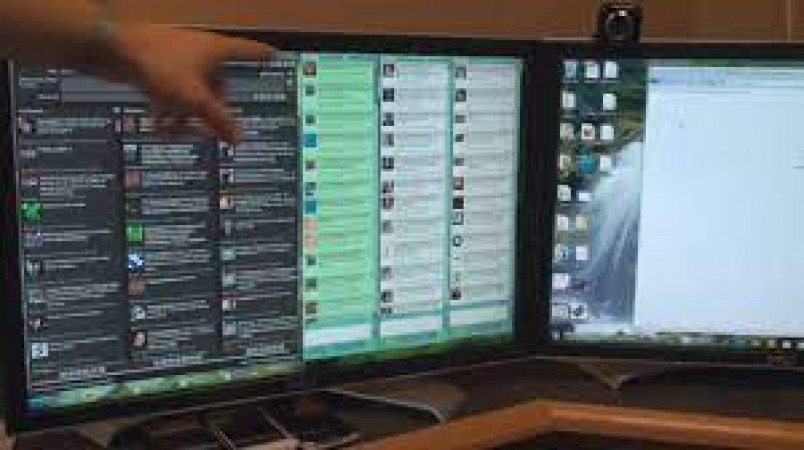
In today's fast-paced digital world, multitasking has become an essential part of our daily lives. Adding multiple monitors to your Windows 10 PC can significantly enhance your productivity, allowing you to work with multiple applications simultaneously and improve your overall workflow. In this article, we will guide you through the process of adding multiple monitors to your Windows 10 PC, step by step, ensuring that you get the most out of your setup.
Understanding the Benefits of Multiple Monitors
Multiple monitors can boost your productivity by providing a larger workspace, enabling you to keep multiple applications and documents open side by side. It enhances multitasking and streamlines your workflow, saving time and effort.
Check Your PC's Compatibility
Before diving into setting up multiple monitors, ensure that your Windows 10 PC can support this feature. Most modern computers have multiple video outputs, but it's essential to check if your graphics card and operating system can handle it.
Choosing the Right Monitors
Selecting the appropriate monitors for your setup is crucial. Consider factors such as screen size, resolution, refresh rate, and connectivity options to meet your specific needs.
Gather the Necessary Cables and Adapters
Depending on your PC and monitor's ports, you might need various cables and adapters to connect them correctly. Make sure you have the required accessories on hand.
Connect the Monitors to Your PC
Follow the steps below to connect your monitors:
Step 1: Check the Ports on Your PC
Inspect the video outputs on your PC to identify the available connections, such as HDMI, DisplayPort, DVI, or VGA.
Step 2: Connect the First Monitor
Using the appropriate cable, connect the first monitor to the video output on your PC.
Step 3: Connect the Second Monitor
Connect the second monitor to another available video output on your PC.
Step 4: Adjust Display Settings
Access the display settings on your PC to ensure both monitors are recognized correctly.
Extend or Duplicate Your Display
After connecting the monitors, you can choose to extend your display to use both monitors as one large workspace or duplicate your primary monitor to display the same content on both screens.
Step 1: Access Display Settings
Right-click on your desktop and select "Display Settings" from the context menu.
Step 2: Choose Your Display Preferences
In the display settings, you can set your preference for multiple monitors.
Arranging and Positioning Your Monitors
To make the most of your multiple monitors, it's essential to arrange and position them correctly.
Step 1: Identify Your Monitors
In the display settings, identify your monitors by their corresponding numbers.
Step 2: Drag and Arrange Monitors
Drag and arrange the monitors on the settings screen to match their physical arrangement on your desk.
Customizing Display Settings
You can further customize your display settings to suit your preferences.
Step 1: Adjust Resolution and Orientation
In the display settings, you can adjust the resolution and orientation of each monitor.
Step 2: Set the Primary Display
Choose which monitor will be your primary display for better usability.
Step 3: Customize Taskbar and Notification Area
Customize the taskbar and notification area preferences for each monitor.
Using Multiple Monitors Efficiently
Now that your multiple monitors are set up, here are some tips to use them efficiently.
Step 1: Utilize Virtual Desktops
Windows 10 offers virtual desktops, allowing you to organize your work even further.
Step 2: Snap Windows to Different Monitors
Use the snap feature to position windows quickly on different monitors.
Step 3: Use Windows Shortcuts
Learn useful shortcuts to manage your windows and navigate between monitors.
Troubleshooting Common Issues
If you encounter any problems with your multiple monitors, follow these troubleshooting steps.
Step 1: Check Cables and Connections
Ensure all cables and connections are secure and functioning correctly.
Step 2: Update Graphics Drivers
Keep your graphics drivers up to date to avoid compatibility issues.
Step 3: Resolve Screen Resolution Problems
If you face resolution problems, adjust the display settings to the appropriate values.
Securing Your Multiple Monitor Setup
Securing your multiple monitors is essential to protect sensitive information.
Step 1: Enable Screen Lock and Password Protection
Set up screen locks and password protection to prevent unauthorized access.
Step 2: Avoid Sharing Sensitive Information
Be cautious about displaying sensitive data on multiple monitors, especially in shared spaces.
Cleaning and Maintenance
Keep your multiple monitors in optimal condition with regular cleaning and maintenance.
Step 1: Cleaning Your Monitors
Use proper cleaning methods to avoid damaging your monitor's display.
Step 2: Proper Cable Management
Keep your cables organized and tidy to reduce clutter and potential hazards.
Lights, Camera, Oscars! Movies with the Most Academy Awards Wins
Effective Advice for Students to Increase Retention and Learning